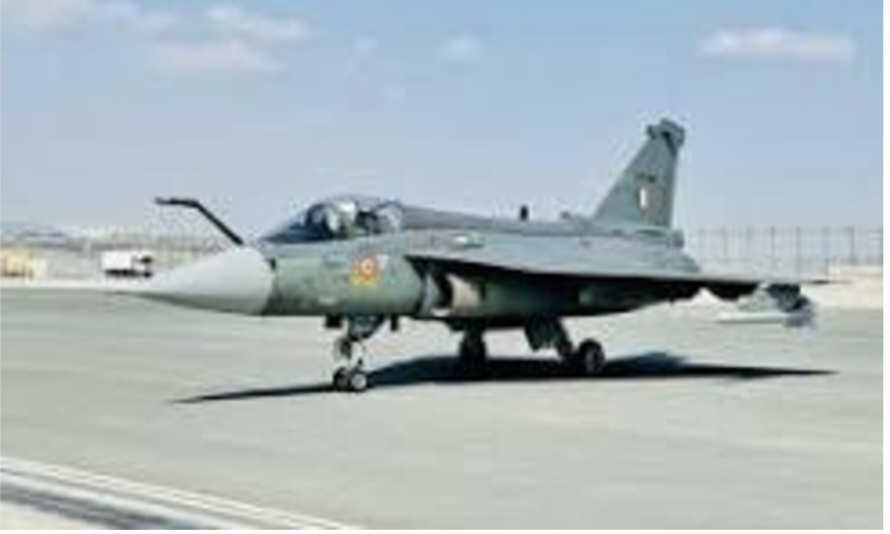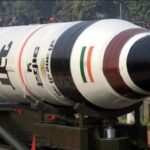
S.K. Singh, ex-Scientist of DRDO and Social Entreprenuer
According to SA Defense the United States will officially block the sale of the General Electric F414-GE-39E engine, a key component of Sweden’s Saab Gripen E fighter jet, to Colombia’s Air Force known as the Fuerza Aérea Colombiana. This decisive veto, announced on social media by defense analyst SA Defensa signals Washington’s intent to exert full control over the potential transfer of the advanced aircraft to other nations not in its alignment, effectively halting any deal involving the Gripen. The decision detailed in a post on X underscores the U.S.’s strategic interest in limiting the spread of American-made military technology, even to a long-standing ally like Colombia. One may ask why we are narrating this news and story here????, Because the so called progressive left liberals of India can consume and comprehend this news in the right perspective to understand that there is no alternative to indigenous technology development for strategic needs… .
To make the case of argument we can analyse the question how good LCA TEJAS as a single engine, delta wing, multirole fighter developed by ADA and HAL is?. The precise answer is – it was intended to replace Mig21s of Indian Airforce. It has been tested for performance and interoperability and Indian Airforce has placed order for dozens of fighter jets. As of now it is powered by GE F04 engine because our indigenous Kaveri engine is not meeting the Thrust needed.
The second natural question may be – is it at par with other fighter jets in its Class?? And the answer is- except Gripen, it is better than almost all the fighter jets in its class. Naval version of Tejas just ensured Indias entry to the elite club of countries which can develop deck based fighters , by landing on INS Vikramaditya.
The next question our so called progressive left liberals ask why India is pursuing development of Kaveri engine, while it has not met the intended thrust needed for LCA in spite of taking huge time of design and development? The answer is GE F404 engine was selected by the Indian aerospace industry to power the LCA Tejas Mk 1 as efforts by the Gas Turbine Research Establishment (GTRE) under the Defence Research and Development Organisation (DRDO) to develop the Kaveri engine did not match the performance of thrust. But the gap in thrust of Kaveri and GE404 is not very high. As per reports GTRE is close to meeting the performance of GE404 and Kaveri engine has been found suitable for unmanned stealth drone, Ghatak, a next generation preparation for warfare.
GE F404: The F404-GE-102 engine has a maximum thrust of 78.7 kN with afterburner. The F404-IN20 engine has a maximum thrust of 85 kN with afterburner. The GE F404 can lose 7–8% of its power in hot conditions.
Kaveri: The current dry version of the Kaveri engine produces 49–51 kN of thrust. The DRDO plans to increase the thrust to 73–75 kN with an afterburner. The Kaveri engine is designed to maintain its thrust capabilities in extreme heat and high-altitude environments. The DRDO and GTRE are committed to refining the engine further with plans for an upgraded version known as Kaveri 2.0, which aims to match or exceed current standards used by the Indian Air Force.
Why is it very difficult to design jet engines used for fighter jets?
1.Performance Requirements
•High Thrust-to-Weight Ratio: Fighter jets require engines that provide significant thrust relative to their weight to achieve high speeds and rapid acceleration.
•Speed and Altitude: Engines must perform efficiently at a wide range of altitudes and speeds, often exceeding Mach 2. This requires advanced materials and cooling techniques.
2. Reliability and Durability
•Harsh Operating Conditions: Fighter jet engines experience extreme temperatures, pressures, and mechanical stresses. They must be designed to withstand these conditions without failure over extended periods.
•Combat Readiness: Engines need to be reliable to ensure that the aircraft can be deployed quickly and effectively in combat situations.
3. Stealth and Signature Management:
Minimizing Infrared and Acoustic Signatures: Modern fighter jets often require engines that produce minimal heat and noise to enhance stealth capabilities. This involves innovative design to reduce exhaust temperature and sound.
4. Fuel Efficiency:
Operational Range: While performance is critical, engines must also be fuel-efficient to extend the operational range of the aircraft, especially during long missions or in combat scenarios.
5. Technological Advancements
•Advanced Materials: The use of lightweight, high-temperature materials (like titanium and ceramic matrix composites) is necessary to improve performance but can complicate manufacturing and increase costs.
•Variable Geometry: Many modern fighter engines use variable geometry components (like adjustable nozzles) to optimize performance, which adds complexity to the design.
6. Integration with Airframe
•Aerodynamics: The engine must be integrated into the aircraft’s design without adversely affecting its aerodynamics. This requires careful consideration of engine placement and airflow.
7. Cost and Development Time
•Budget Constraints: Developing advanced jet engines is costly and time-consuming, often involving years of research and testing. Budget limitations can restrict the scope of development.
•Testing and Certification: Extensive testing is required to ensure safety and performance, which adds time and complexity to the development process.
8. Regulatory and Military Standards:
Compliance with Standards: Engines must meet rigorous military and safety standards, which can vary by country and require extensive documentation and testing.
Overall, the interplay of these factors makes jet engine design for fighter jets a complex and demanding engineering challenge that requires a multidisciplinary approach combining aerodynamics, materials science, thermodynamics, and advanced manufacturing techniques.
The Kaveri engine represents a critical step toward India’s self-reliance in aerospace technology, it may currently not match the performance of the GE F404 engine but Kaveri’s future success seems to be high after overcoming existing technical challenges and achieving reliable operational status in upcoming trials. In a significant advancement for India’s aerospace sector, the Kaveri engine has been approved for inflight testing, marking a pivotal milestone in the long-term development of indigenous jet engines. This announcement was made by the Gas Turbine Research Establishment (GTRE), part of the Defence Research and Development Organisation, which has been working on this project.
In spite of the fact that India is talking to leading Jet engine developers like GE(USA), Safran(France) and Rolls Royce(UK) for collaboration, it is imperative to keep working on Kaveri and its different variants to have the indigenous jet fighter engines full control over future plans of strategic needs. Any technology transfer to us for critical components will have a bearing on the consent of the country providing technology for selling a finished product to other countries. Veto by America on Sweden’s Saab Gripen E fighter jet not to sell it to Colombia because it uses GE404 need to be taken as an example why we need to have indigenous technology development and make in India program going… .







